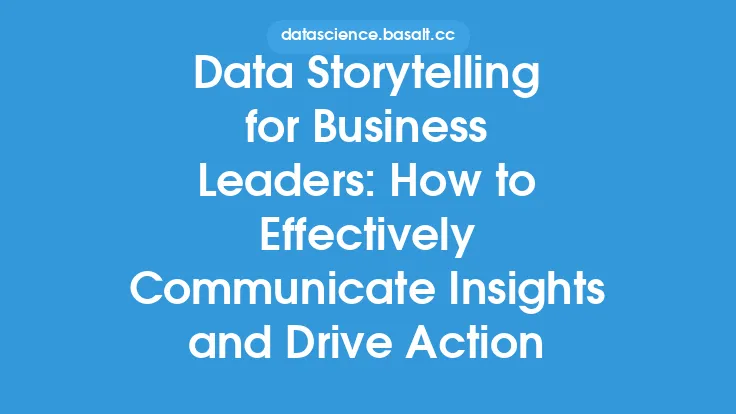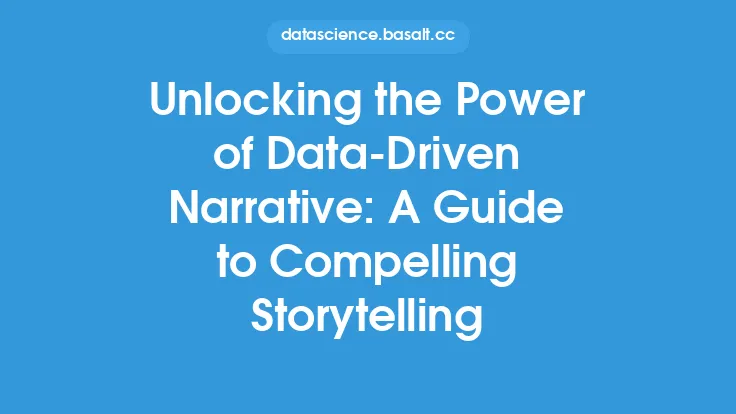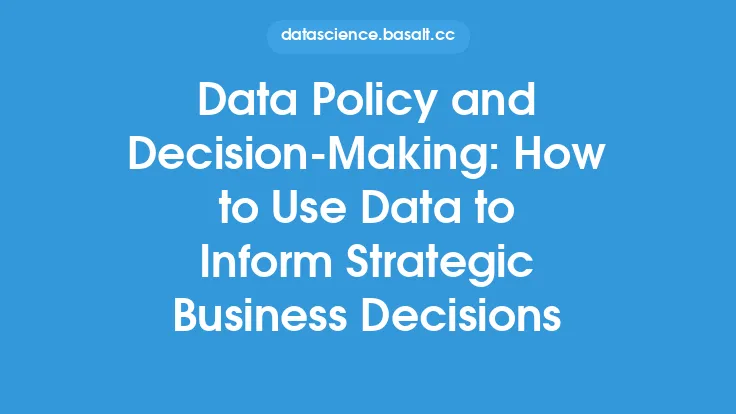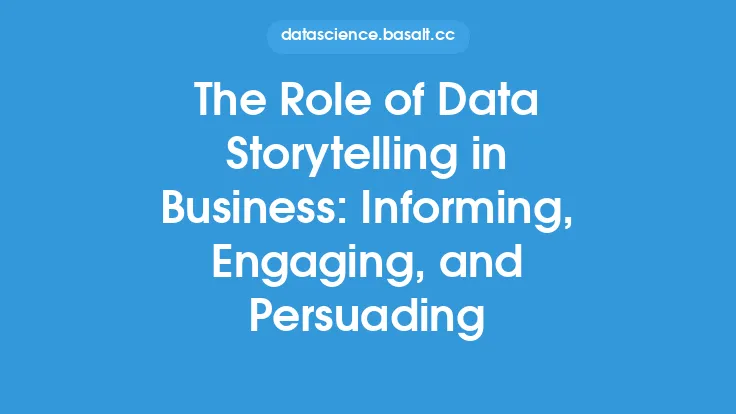In today's data-driven world, businesses are constantly looking for ways to make their messages more engaging, informative, and memorable. One effective way to achieve this is through data-driven storytelling, which involves using data and analytics to create compelling narratives that capture the audience's attention and convey key insights. Data-driven storytelling is a powerful tool for businesses, as it allows them to communicate complex information in a clear and concise manner, making it easier for stakeholders to understand and make informed decisions.
Introduction to Data-Driven Storytelling
Data-driven storytelling is a process that involves collecting, analyzing, and interpreting data to create a narrative that is both informative and engaging. This approach to storytelling uses data visualization, statistical analysis, and other techniques to create a compelling story that resonates with the audience. The goal of data-driven storytelling is to present complex data in a way that is easy to understand, making it accessible to a wide range of stakeholders, including business leaders, customers, and employees.
The Benefits of Data-Driven Storytelling
Data-driven storytelling offers numerous benefits to businesses, including improved communication, increased engagement, and better decision-making. By using data to tell a story, businesses can create a narrative that is grounded in facts and evidence, making it more credible and trustworthy. Additionally, data-driven storytelling can help businesses to identify trends, patterns, and insights that might be missed through traditional analysis. This can lead to new opportunities, improved efficiency, and increased competitiveness.
The Process of Data-Driven Storytelling
The process of data-driven storytelling involves several key steps, including data collection, data analysis, data visualization, and narrative creation. The first step is to collect relevant data from various sources, such as databases, spreadsheets, or external data providers. The next step is to analyze the data using statistical techniques, such as regression analysis, clustering, or decision trees. The analyzed data is then visualized using charts, graphs, or other visualization tools to create a clear and concise picture of the insights. Finally, the visualized data is used to create a narrative that tells a story and conveys the key insights.
Data Visualization Techniques
Data visualization is a critical component of data-driven storytelling, as it allows businesses to present complex data in a way that is easy to understand. There are several data visualization techniques that can be used, including bar charts, line charts, scatter plots, and heat maps. Each technique has its own strengths and weaknesses, and the choice of technique depends on the type of data and the story being told. For example, bar charts are useful for comparing categorical data, while line charts are better suited for showing trends over time.
Narrative Creation
The final step in the data-driven storytelling process is to create a narrative that tells a story and conveys the key insights. This involves using the visualized data to create a compelling story that resonates with the audience. The narrative should be clear, concise, and easy to follow, with a clear beginning, middle, and end. The story should also be supported by evidence and facts, making it credible and trustworthy. Additionally, the narrative should be tailored to the audience, taking into account their interests, needs, and level of understanding.
Best Practices for Data-Driven Storytelling
There are several best practices that businesses can follow to create effective data-driven stories. First, it's essential to know the audience and tailor the story to their needs and interests. Second, the story should be clear, concise, and easy to follow, with a clear beginning, middle, and end. Third, the story should be supported by evidence and facts, making it credible and trustworthy. Fourth, the story should be visual, using charts, graphs, and other visualization tools to create a clear and concise picture of the insights. Finally, the story should be interactive, allowing the audience to explore the data and insights in more detail.
Common Challenges and Pitfalls
While data-driven storytelling offers numerous benefits, there are also several common challenges and pitfalls that businesses should be aware of. One of the biggest challenges is ensuring that the data is accurate and reliable, as incorrect or incomplete data can lead to misleading insights and conclusions. Another challenge is creating a narrative that is engaging and memorable, as complex data can be difficult to present in a way that is easy to understand. Additionally, businesses should be aware of the potential for bias and misinterpretation, as data can be presented in a way that is misleading or deceptive.
Technical Considerations
From a technical perspective, data-driven storytelling requires a range of skills and tools, including data analysis, data visualization, and narrative creation. Businesses can use a range of tools and technologies, such as Tableau, Power BI, or D3.js, to create interactive and dynamic visualizations. Additionally, businesses can use statistical programming languages, such as R or Python, to analyze and model complex data. Finally, businesses can use narrative creation tools, such as Adobe Creative Cloud or Microsoft Office, to create a compelling story that resonates with the audience.
Real-World Applications
Data-driven storytelling has a range of real-world applications, including business intelligence, marketing, and finance. For example, businesses can use data-driven storytelling to create interactive dashboards that provide insights into customer behavior, sales trends, and market analysis. Additionally, businesses can use data-driven storytelling to create compelling marketing campaigns that resonate with their target audience. Finally, businesses can use data-driven storytelling to create financial reports and presentations that provide insights into financial performance and trends.
Conclusion
In conclusion, data-driven storytelling is a powerful tool for businesses, allowing them to communicate complex information in a clear and concise manner. By using data visualization, statistical analysis, and narrative creation, businesses can create compelling stories that capture the audience's attention and convey key insights. While there are several challenges and pitfalls to be aware of, the benefits of data-driven storytelling make it an essential skill for businesses to master. By following best practices, using the right tools and technologies, and being aware of technical considerations, businesses can create effective data-driven stories that drive engagement, inform decision-making, and lead to business success.





